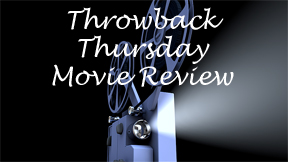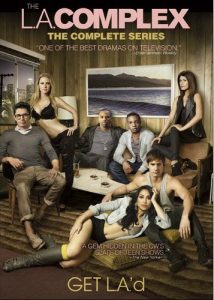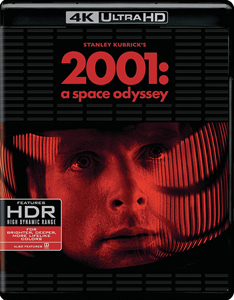“2001: A Space Odyssey” (1968) kicked off nearly a decade of cerebral sci-fi that didn’t end until “Star Wars” premiered in 1977. Members of the “Star Wars” generation like me then watched “2001” – since it was about space and spaceships — and inevitably found it slow and boring, partly because we watched it at too young an age but even more so because we thought of space as a place for serialized laser-fight adventures.
Long and thoughtful
Also, “2001” is objectively long (2 hours, 29 minutes) and slow (although it’s pretty cool that my DVD includes music over a black screen at the front and back ends, plus the cinema intermission). But it’s also deeply thoughtful.
Especially in the final act, director Stanley Kubrick presents a viewer with a series of images, with the orchestral score providing hints, and asks us to piece together what we are seeing. Specifics can be found in the novel by Arthur C. Clarke (see review below), a co-writer on the film with Kubrick. But it’s safe to say that “2001” is an art piece about the cycle of life.

“2001: A Space Odyssey” (1968)
Director: Stanley Kubrick
Writers: Stanley Kubrick (screenplay), Arthur C. Clarke (screenplay, novel)
Stars: Keir Dullea, Gary Lockwood, Douglas Rain
Given that final image of the Star Child – formerly astronaut Dave Bowman (Kier Dullea), or grown out of him, or connected to him – backed back the triumphant blast of “Thus Spoke Zarathustra,” “2001” leaves a viewer with a positive vibe about humanity’s next step.
A downbeat vibe
However, the journey of the Discovery One to Jupiter is decidedly cold and downbeat. Bowman and fellow astronaut Frank Poole (Gary Lockwood) seem mildly annoyed by their jobs (which they nonetheless do well), and they should be: They aren’t let in on the secret of the monolith. Everyone earlier in the film is stiff and formal – almost robotic. Consider the totally generic board meeting of diplomats regarding the monolith found on American soil on the moon.
(Unlike in the similarly proper and ascetic “Star Trek,” though, nations don’t fully cooperate in “2001.” When William Sylvester’s Heywood Floyd chats with some Russian friends on a space station en route to the moon, he can’t tell them about the monolith because it’s top secret.)
We see one non-diplomat, Floyd’s little girl, and even she is largely unable to put together a full thought when talking to her daddy via space-phone. Is this a statement about the future of the human race?
Less individualist future
Whether the blandness of the humans in “2001” is a flaw or a purposeful commentary depends on how generous you want to be. Clarke and Kubrick are both deliberate in their respective media, and “2010: The Year We Make Contact” (1984) — a sequel we’re not supposed to prefer but which I do – features humans with emotions and personality. So “2001” is most likely stiff because Clarke writes that way and Kubrick directs his actors that way.

But it is interesting to think of it as a statement about how humans become less individual — more robotic, predictable and collectivist — as we go further into the future.
Another part of “2001” that can be read negatively, if you want to be a contrarian, is the monolith and how it relates to evolution. In the famous prolog, the apes – influenced by the African monolith – take the next step in evolution by learning to kill.
The bone weapon turns into a spaceship in what’s famously the longest forward jump-cut in cinematic history. And when the American astronauts gather around the moon monolith, haunting male vocalists dominate the soundtrack. Then those foreboding vocals return in the vicinity of Jupiter.
While the meaning of the mood is open to debate, there’s no question “2001” is an effectively chilling piece, simply as an experience. True, many moments showing off future tech are awe-inspiring. (And influential on “Star Wars.” A docking bay looks like the Death Star’s, and the panning shot along the Jupiter One would later be mimicked for the Star Destroyer’s introduction.)
Computer is the best character
Yet our awe is kept in check. Narratively, this is because of the villainous HAL-9000, the film’s best character thanks to Douglas Rain giving one of cinema’s most famous voice-only performances. The computer, for a reason that’s not clearly explained, falsely identifies a problem with a component.
Then – yada, yada, yada – Hal kills Frank and the three cryo-frozen astronauts and tries to kill Dave. Hal’s dialog is straightforward on the page, but Rain gives it subtle menace; he doesn’t need to say “It’d be a shame if I had to knock you off your perch so you float away in space, Frank.” We can read between the lines.
While Clark and Kubrick have a lot to say about whether we should implicitly trust computers, I realized on this viewing that I’m too quick to call “2001” hard SF (as in: rooted in science). It’s actually a space fantasy the same as “Star Wars,” and not just because the final act taps into spirituality and/or science that’s so far beyond us that it seems like magic.
Not truly hard science
The giveaways that “2001” doesn’t actually care about science are the extra-vehicular sequences. The film portrays details of space travel (zero-G, the creation of artificial gravity, the communications delay) very deliberately up until this point, but then it does not show us the slowing down and stopping of the Jupiter One, nor do the astronauts comment about what the stoppage does to the fuel supply.
Indeed, on past viewings, I’ve somehow thought that all this EVA stuff is happening while the ship is still speeding toward Jupiter. But then a friend pointed out that the laws of physics apply in space, just as on Earth. It’s not some magical place where the rules go out the window.
So in order to do all those EVA maneuvers, the Discovery One obviously stopped – but this is not shown. Also weird: Poole space walks without a tether. This seems dangerous (and, indeed, he’ll pay the price for it), in addition to contradicting the extremely protocol-based future that has been established.
“2001” covers the whole course of mankind, but in another way it’s merely a sketch of a story, thus allowing for the aforementioned film sequel, plus three book sequels by Clarke. Still, its narrative is almost as influential as its portrayals of tech, spaceships and space travel.
The Meaning of Existence is a staple SF theme; the Russian gem “Solaris” would follow four years later, and the subgenre especially had a resurgence in the late-1990s with the likes of “Contact,” “Event Horizon” and “Sphere.” More recent films like “Interstellar” and “Ad Astra” also owe a debt. All of those films pack additional elements onto the framework without sacrificing the Big Question at its core.
“2001” is, comparatively, all framework. But what a framework to build upon.
IMDb Top 250 trivia
- With an 8.3 rating, “2001: A Space Odyssey” ranks No. 90 on IMDb. It’s the highest-rated film released on April 3, 1968, beating out the similarly legendary “Planet of the Apes” (8.0).
- Kubrick places an astonishing seven of his 13 films in the Top 250, with “2001” right in the middle of the pack. The other six are “Paths of Glory” (No. 60), “The Shining” (No. 63), “Dr. Strangelove” (No. 70), “Full Metal Jacket” (No. 100), “A Clockwork Orange” (No. 106) and “Barry Lyndon” (No. 197).
- The less-heralded sequel, 1984’s “2010,” is reasonably well respected by IMDb voters with a 6.8 rating.
4 stars
THE NOVEL
Arthur C. Clarke’s “2001: A Space Odyssey” (1968), written simultaneously with the making of the movie but released slightly after, is of course not a novelization (an art form the author loathes, as he notes in the introduction to the Millennial Edition), but it offers the same benefits. We pick up details to replace the abstractions in director Stanley Kubrick’s film.
Science and spirituality
Most notably, “2001” is a core SF novel that blends science and spirituality. The monoliths are tools of a higher being for teaching lower beings. In the opening chapters, we see specific ways in which the slab teaches Moon-Watcher and other man-apes.
Later, it’s clear that the monolith guides astronaut Dave Bowman from human to the next, spiritual, stage of evolution. He’s a Star-Child looking down on an Earth that he can manipulate at his will, and he can move throughout the cosmos at the speed of thought.

“2001: A Space Odyssey” (1968)
Author: Arthur C. Clarke
Genre: Science fiction
Series: Space Odyssey No. 1
Settings: Space station, the Moon, Discovery spaceship, outer space, in a future 2001
At the end of Chapter 32, Clarke posits the level beyond what Bowman has become: “And if there was anything beyond that, its name could only be God.”
Like Carl Sagan would later do more explicitly with “Contact,” “2001” is Clarke’s attempt to show that Science Versus Religion need not be a conflict: God can be discovered through science; we just haven’t gotten there yet, and there’s no shame in not knowing everything yet.
Oddly, these gestures by SF writers don’t ever make a notable impact among people who interpret religious texts literally. Granted, I have known people who believe in both science and the story that Jesus is the son of God. And there are people – Clarke and Sagan arguably among them — who believe in God in a spiritual sense, not a religious sense. Yet Science Versus Religion is still a thing well into the 21st century.
Oh well, it’s certainly a noble try by Clarke. Had he been a cynic, he could’ve likely parlayed his writing skills into making money off a new religion like L. Ron Hubbard did.
Beauty of the cosmos
Clarke’s writings about the natural beauty of the cosmos – a White Dwarf circling a Red Giant, for example – are poetic. He peppers in some science and math (the monoliths are in a meaningful 1:4:9 ratio), though not to the degree of Sagan in “Contact.” His prose is crisp and clear, although it does bug me that he uses “myriads of” (instead of the more grammatically accepted “myriad”).
Although Clarke imagines Moon-based office workers using typewriters, he also successfully predicts the internet. The bureaucrat Floyd, on his journey to the Moon, uses a tablet to access electronic editions of newspapers. Clarke fails to predict URLs, instead having Floyd use numeric codes (like with phones and TV channels), but that’s a minor quibble.
Scientific bungling
Unfortunately, the major scientific bungling from Kubrick’s film remains in place in the novel. Frank Poole goes extra-vehicular while the Discovery is speeding through the Solar System, and there’s no explanation for why he and his space pod are able to match positions with the larger ship as if all are floating peacefully in space.
(I feel certain that if Clarke intended for the Discovery to stop for every EVA, he would’ve had a whole chapter about the process and fuel cost of the maneuver. So in the book, even more so than in the film, it’s clear that the Discovery is still speeding along.)
Clarke makes offhand reference to tethers and clamps, but not enough to satisfyingly explain the logistics. Consider a mechanic working on a car while it travels at highway speeds. You need more than a few throwaway remarks to successfully explain how the maneuver can be done safely.
Bland Bowman
Another weakness is that Clarke doesn’t write characters well. HAL-9000 is almost an exception, and the book offers a clearer explanation than the film about why Hal misbehaves: He has been asked to withhold the true nature of the mission from Bowman and Poole (the two astronauts who are awake for the duration of the journey to Saturn — which was changed to Jupiter in the film). This comes in conflict with Hal’s base programming of honesty.
But Bowman, the audience surrogate and main character, remains a blank slate, with neither a backstory nor a personality beyond the most rudimentary. My impression is that Clarke didn’t enjoy writing characters, so he never tried. Still, trying and coming up short makes for better reading than not trying at all, which is why I slightly prefer “Contact” to “2001” even though Clarke is obviously a more experienced and polished storyteller than Sagan.
At one point, Clarke says Bowman is “shattered” by something that has happened, and I don’t feel it at all. But generally, Bowman is just a placeholder, a bland astronaut who fulfills the role of first man to Saturn – and to the meeting with the monolith-makers — because somebody has to.
“2001” suffers from this. A man gains the next plane of spiritual existence, but he’s someone who has never thought of these issues one way or another. There’s no emotion to it.
Clarke goes off on (always wonderful) chapter-long tangents about various space topics – asteroids, the Jupiter system, the Saturn system, wormhole theories, etc. – but it’s always from an authorial point of view, not tied into a character.
“2001” is a grand journey that has retained some of its magnetism on each of my three readings, about a decade apart. But I believe Clarke’s lack of interest in developing characters prevents “2001: A Space Odyssey” from having more resonance through the ages.
4 stars

